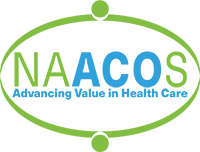A New Approach to Paying for Primary Care in the Medicare Shared Savings ProgramApril 13, 2023Highlights:
By Ann Greiner, Aisha Pittman, Larry McNeely, Alyssa Neumann Continued underinvestment in primary care, increased administrative burden, and lingering effects of the COVID-19 pandemic have dramatically undermined access to primary care that’s essential for better health. There is growing consensus that payment reform is necessary to create a robust primary care system, changing both how and how much we pay. Evidence has shown that prospective payments offer primary care practices the flexibility to transform care delivery and provide comprehensive, team-based care. Specifically, the National Academies of Sciences, Engineering, and Medicine (NASEM) recommends shifting primary care payment toward hybrid models that include prospective population-based payment in addition to a per-visit payment. ACOs offer opportunity to test payment shifts Leading voices from the primary care and accountable care communities agree. On March 22, 27 diverse organizations, representing primary care clinicians, ACOs, medical groups, consumer advocates, mental health, and health care payers sent a letter to CMS leadership calling on the agency to establish a new hybrid primary care payment option in the MSSP this year. Additionally, the letter outlines six principles to guide the approach:
Two payment approaches to recognize varying practice needs and capabilities To meet practices where they are and encourage broad participation, we propose CMS offer two payment approaches within the hybrid primary care payment option. Approach 1: CMS pays prospective and per-visit payments directly to the primary care practices, with a portion paid to the ACO. Participating practices and ACOs would select from a range of options based on practice capabilities and the services included in capitated payments. The payment portion withheld for the ACO could be used to fund infrastructure, data analytics, care coordination services, and performance incentives for delivering high-value care. The options selected would be mutually agreed upon by the ACO and the participating practices. This approach will likely be most suitable for ACOs that lack the infrastructure and experience to administer payments. Approach 2: CMS makes payments directly to the ACO, which administers the capitated payments to participating primary care practices. This approach is similar to the methodology being tested in the ACO Realizing Equity, Access, and Community Health (REACH) Model and is likely most suitable for ACOs with the experience and infrastructure to pay practices. Similar to the first approach, the downstream payment arrangements would be mutually agreed upon by the ACO and its participating primary care practices, with details outlined in the Participation Agreements. In addition to sub-capitation, payments from the ACO may include a bonus pool or other incentives to reward the delivery of high-value care. Guided by the principles described above, a hybrid primary care payment option in MSSP can help Medicare, primary care practices, and ACOs deliver better health. We encourage CMS to rapidly implement these approaches. CMS should send a clear signal of agency action on the proposal this year. |
